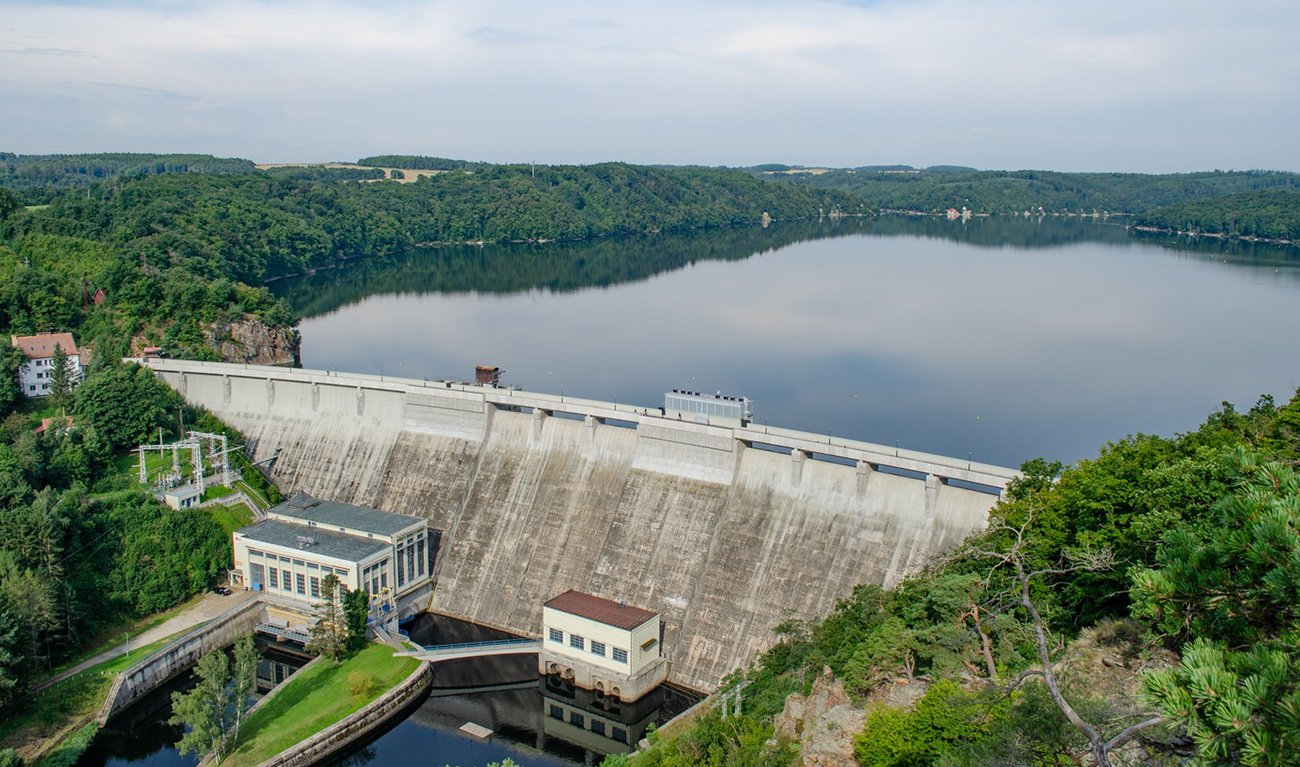
Vranovská Dam has been attracting visitors for 90 years
 |
Prague – The charming corners of the Vranov Reservoir, nicknamed the Moravian Adriatic, have been attracting vacationers and tourists for nine decades for swimming as well as walks to Bítov Castle and the ruins of Cornštejn. The reservoir was built here over three years from 1930 to 1933, two kilometers upstream of Vranov nad Dyjí. At that time, it was the largest reservoir in Central Europe, and until the construction of the Slapská Dam in the late 1950s, it was also the largest reservoir in Czechoslovakia. Now it ranks tenth in the Czech Republic with an area of over 760 hectares. The reservoir began to fill in early October 1933 and reached its maximum level only in April 1936.
The deep canyon of the river and the surrounding nature attracted numerous visitors even at the turn of the 19th and 20th centuries. It was rightly called the "Moravian Switzerland." At the beginning of the 20th century, there was consideration of creating a railway line that would connect the main sites in Podyjí, located in the romantic valley of the Dyje River. However, this plan was abandoned due to World War I, and after the establishment of Czechoslovakia, it was replaced by another project rooted in plans also from the early 20th century. This was the construction of the dam, which was primarily intended to prevent floods in the lower reaches of the river and also to generate electricity.
The first idea for the construction of the dam was conceived during the summer of 1903 when such a proposal was submitted by Ferdinand Schmidt, the son of a Vranov builder and an architecture student in Switzerland, along with a group of classmates. The project was discussed by the Podyjí Industries company (Thayawerke) in 1912, but at that time there were no funds for such a project.
After the establishment of Czechoslovakia in 1918, the state became the investor of the reservoir, with the Moravian-Silesian Land contributing through the joint-stock company Západomoravské elektrárny. In 1929, three joint-stock companies were tasked with the construction of the Vranov Reservoir: the Czech-Moravian Construction Company in Prague, the Lanna Company in Prague, and Pittel und Brausewetter in Brno.
Construction of the dam (along with the construction of the new Bítov, two bridges, and engineering networks) began in March 1930, with around 2500 people working on it, and it was completed in three and a half years. The first concrete gravity dam made of cast concrete in the Czech lands is 60 meters high and 292 meters long at the crest. It holds up to 132,500 cubic meters of water over an area of 763 hectares. The maximum depth of the reservoir (46 meters) is directly by the wall, the reservoir is about 30 kilometers long and extends down to the valley of Želetavka beneath Bítov Castle.
The reservoir submerged the ancient town of Bítov, which was a popular resort and an inspirational source for many artists. At the request of the former residents, a new village was built in the area of the former deer park. However, until 1954, the partially submerged Church of St. Wenceslas still protruded above the surface of the reservoir, and its tower was later demolished for safety reasons.
The massive construction project significantly exceeded its budget: it was supposed to cost 87 million, but the price eventually soared to 132 million crowns, and newspapers wrote about a "black hole" for money. The police started to investigate the matter, which led to a long legal dispute, among others with the main accused Karel Navrátil, who designed the dam and managed its construction, and who was allegedly bribed. At the end of 1935, he was sentenced to a year and a half in prison for abuse of power, and later Vranov corruption cases reached the Supreme Court twice, which confirmed the verdict in November 1938. Meanwhile, Munich occurred, and "along with the dam, its designer and the backbone of the entire affair, Karel Navrátil, ended up in Germany, perhaps again Karl Nawratil," wrote Lidové noviny.
Immediately after its completion, new recreational opportunities began to emerge at the reservoir. Besides fishing, swimming, and water sports, there was also excursion boat transport, which began here in 1934 and continued to operate until 1992 with a brief interruption during World War II. It then fell silent for 14 years before being revived again in 2006. In 1991, the Podyjí National Park was established in the area below Vranov nad Dyjí towards Znojmo, where one can visit places that had been closed off by barbed wire for 40 years. The Dyje River forms the border with Austria in many places here.
In 2002, a flood occurred here, damaging the reservoir, which needed repairs focusing primarily on the rehabilitation of concrete structures. Later, the bridge on the dam’s crown was also repaired and was out of operation for two summer seasons.
The English translation is powered by AI tool. Switch to Czech to view the original text source.
0 comments
add comment






